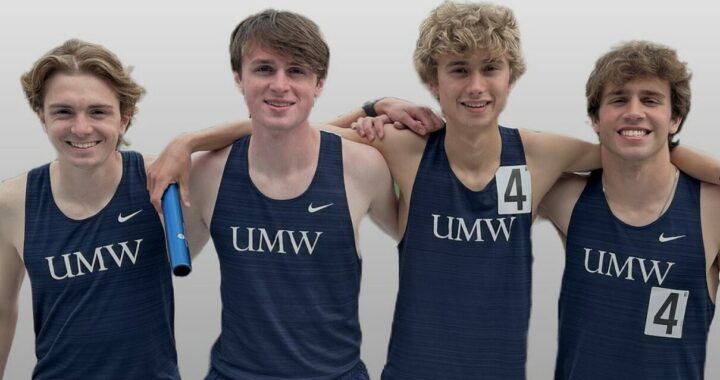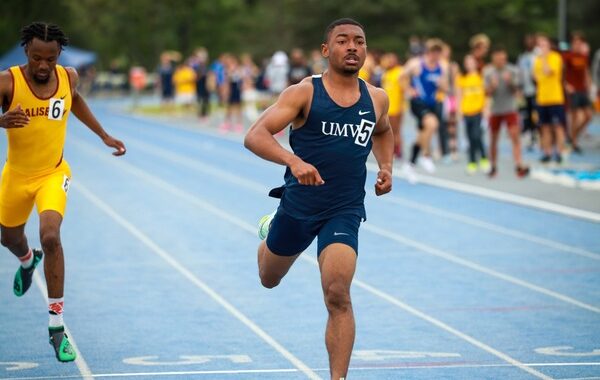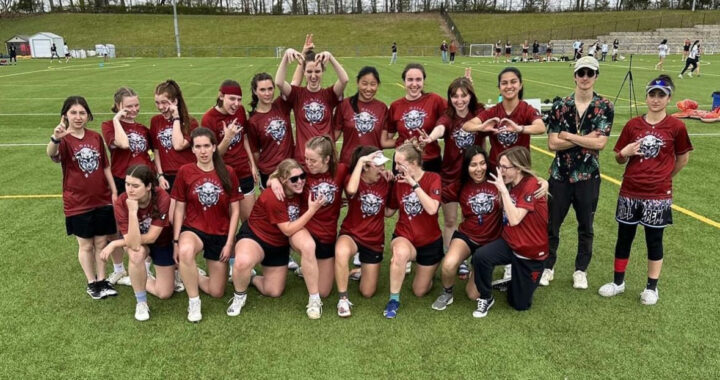UMW Athletic Department continues to strive for success
5 min readBy ADAM HAGER
Sports at the University of Mary Washington are as competitive and popular as ever. With 500 student athletes and 23 men’s and women’s varsity teams, athletics is now much of what the school is known for.
Serving as the “front porch” of the university, Eagle athletics are the most visible component of the school according to Director of Athletics Ken Tyler.
Tyler, who joined the Department of Intercollegiate Athletics in 2012, is the one leading the push for excellence. After winning the Capital Athletic Conference (CAC) Richard Cook Award for athletic excellence last year, Tyler is looking to build on success now and into the future.
One word that defines athletics at UMW is excellence. Eagle sports teams are consistently competitive at the national level, highlighted recently by the men’s and women’s tennis teams, the field hockey team, and the swimming program.
Almost every sport holds a conference championship, and there are five or six NCAA Division III final four appearances, according to Tyler. As with any university athletic program, UMW faces its share of challenges despite its recent success.
Tyler said goal four of the department’s five goals has the most room for improvement. Goal four is: to maximize available resources and identify new funding opportunities.
“We are challenged from a resource standpoint. We are always looking for creative ways to generate new revenue. We’re never going to be UVA or Virginia Tech, with ESPN contracts, but we have done things like start a corporate partner program, an official booster club, and some special events that are designed to raise money for our programs and student-athletes,” Tyler said.
One metric the department uses to gauge overall success is the Learfield Directors’ Cup, which ranks NCAA Division III athletic programs based on their success at the national level. It takes the average national ranking of all varsity sports teams and then ranks programs based on that average.
Last year, UMW finished 59th out of nearly 450 schools while two CAC opponents, Salisbury University and Christopher Newport University, finished in the top 25.
Compared with other Division III institutions, UMW has lower total revenues than 21 of the top 25, according to the athletic strategic plan.
“We are always looking for creative ways to generate new revenue. We’re never going to be UVA or Virginia Tech with ESPN contracts, but we have done things like start a corporate partner program, an official booster club, some special events that are designed to raise money for our programs and student-athletes,” Tyler said. Undoubtedly, additional financial resources would bolster the athletic program and help propel it to the next level.
Outdated or nonexistent athletic facilities are other issues Tyler is trying to tackle.
“We have some facility issues, and sometimes people look at me like I’m crazy when I say that,” Tyler said. With the recent additions of the Tennis Center and the Anderson Center, UMW athletics certainly has something to boast about.
Goolrick Hall, however, is another story. Built in 1968, the building’s recent leaking issues as the result of pipes bursting led to flooding. There is also a shortage of locker rooms.
“We have beautiful locker rooms for our basketball and volleyball student-athletes, but we virtually have no locker rooms for anybody else,” Tyler said.
Despite a state-of-the-art Battleground Athletic Complex where teams compete, they have no nearby locker room, thus prompting Tyler to say he wants to see a field house built in the complex.
While Tyler wants to see excellence with every sport at UMW, he realizes there are a handful of programs that have greater potential to carry the athletic program to the next level.
“In terms of opportunities for growth, marketing and exposure, certainly our basketball programs might lead the way there. Basketball is the only event we charge admission for, for what that’s worth. We put some marketing dollars and efforts into basketball that we might not for other sports just because of the venue and the opportunity that we see there,” he said.
Even with the exposure a high profile sport can bring, Tyler remains committed to seeing every sport succeed.
“I want to be good in everything. I’ve challenged our coaches with that,” he said.
Tyler has created what he calls “The Drive for 25!,” which is geared to help the school push for a spot in the top 25 of the Learfield Directors’ Cup.
“The only way you [get in the top 25] is if you have success across the board,” Tyler said.
Some students across campus are still pushing for a football team at UMW. While Tyler did mention the fact that the school does not have a team, it does not appear that the school will have one anytime soon.
Interestingly, though, only two of the top 25 Division III schools in the country do not sponsor varsity football teams.
One issue Tyler, along with head coaches, worked on is student-athlete alcohol citations.
“It feels like we’ve had fewer [this year]. I had a [student-athlete with a] DUI last year, I had a major fight, and we had a couple of major off-campus party issues. I haven’t had any of those this year. Most of our issues have been underage possession [and] noise violations,” Tyler said.
In light of these issues, Tyler is working hard to see a reduction in the number of violations.
“All of our [students who commit] violations do end up in my office. I meet with them one-on-one and hopefully counsel and motivate them to not do it again,” he said.
According to Tyler, he will not know much the percentage of alcohol citations has dropped until the end of the school year.
Athletic programs across the country are always trying to attract prospective student-athletes and this is surely the case at UMW, where Tyler says his coaches recruit players 12 months a year.
“I want [student athletes] to think about excellence in every facet. I want them to be passionate about their sport, be passionate about winning and being good teammates. I also want them to be passionate about academics and being involved on campus.”
Leadership, service and social opportunities are a few of the things Tyler wants to see current and future student athletes involved in. He believes athletics can serve as a vehicle to help students maximize their college experience.











